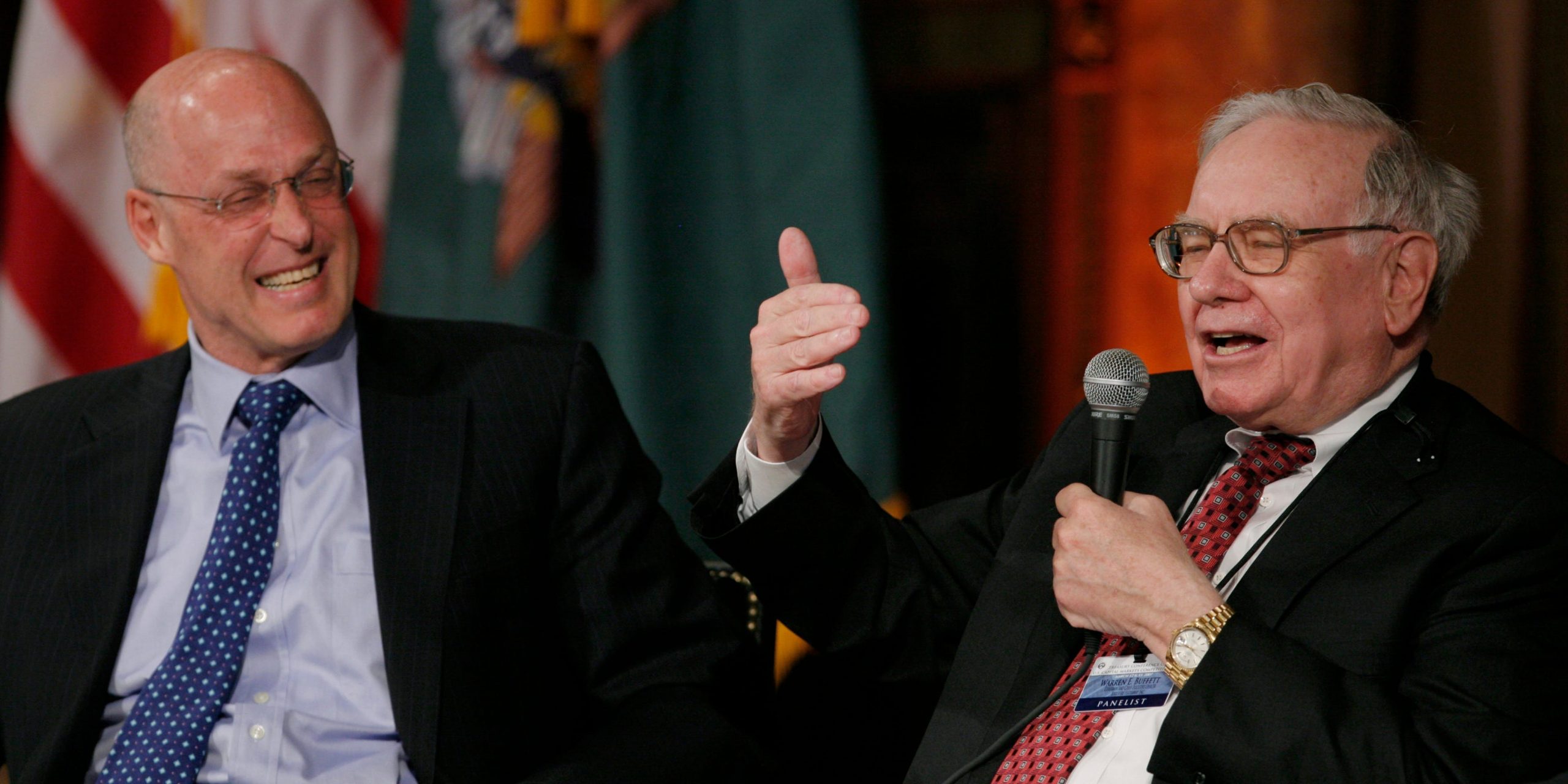
REUTERS/Jim Young
- Warren Buffett phoned Treasury Secretary Hank Paulson at the height of the 2008 financial crisis with a suggestion that likely saved the US economy from an even deeper recession.
- The famed investor and Berkshire Hathaway CEO proposed the government plow capital directly into banks instead of only buying their distressed assets.
- Paulson quickly gathered the bosses of the nation’s biggest banks and convinced them to accept billions of dollars in investment.
- The Treasury demanded preferred stock paying chunky dividends, as well as stock warrants in return, emulating Buffett’s bailout of Goldman Sachs in September 2008.
- Former President George W. Bush called it “probably the greatest financial bailout ever” and said it “probably saved a depression.”
- Visit Business Insider’s homepage for more stories.
Warren Buffett made a late-night call on Saturday, 11 October 2008 that likely spared the US from an even more devastating financial crisis.
The billionaire investor and Berkshire Hathaway CEO dialed then-Treasury Secretary Hank Paulson, the pair said in “Panic: The Untold Story of the 2008 Financial Crisis,” a documentary released in 2018.
“Hank, this is Warren,” Buffett said. A tired and groggy Paulson’s first thought was, “My mom has a handyman named Warren, why is he calling me?”
Buffett was calling about the Troubled Asset Relief Program (TARP), which authorized the Treasury to spend $700 billion purchasing distressed assets from banks. Lawmakers passed it in a desperate effort to shore up the financial system after the collapse of Wachovia and Washington Mutual — two of the greatest bank failures in American history.
Once Paulson realized it was Buffett on the line, the Berkshire boss suggested the government invest directly in the banks instead of only buying their assets, as it would likely "come out doing very well" using that approach.
"He laid out the idea which was the germ of what we did," Paulson said in the documentary.
Paulson assembled the bosses of the nation's biggest banks the following Monday. He persuaded them to accept billions in government cash, threatening to withhold future aid if they refused to take it.
The Treasury ultimately plowed funds into more than 700 financial institutions as part of the Capital Purchase Program. In exchange, it received preferred stock paying a healthy dividend or debt securities.
It also secured warrants enabling it to buy the companies' shares at a fixed price in the future, capturing some of the upside from their recovery in return for risking taxpayers' money.
The deals were at least partly modeled on Buffett's bailout of Goldman Sachs a few weeks earlier. The investor handed the bank $5 billion in exchange for preferred stock paying a 10% annual dividend as well as stock warrants.
Former President George W Bush praised the banking program as "probably the greatest financial bailout ever" in the documentary, adding that it "probably saved a depression."

